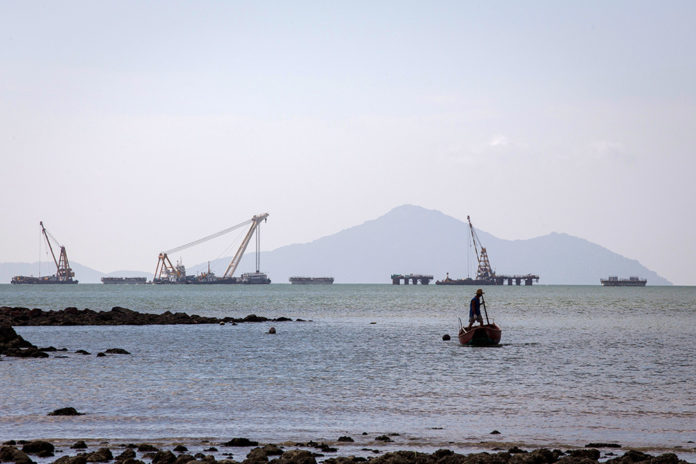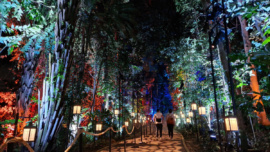Authorities from Hong Kong’s Highway Department have been called out for not notifying the public about the shifting of two seawalls located on one of the artificially constructed islands created to link the neighbouring SAR to Macau via the Hong Kong-Zhuhai-Macau Bridge.
As quoted by the South China Morning Post, the Director of the Highways Department, Daniel Chung Kum-wah, admitted that the two walls in question had shifted up to 10 metres beyond their original intended position.
However, given that the department had “resolved” the issue, the Director justified the lack of communication by the fact that it had not caused “any impact to nearby residents” and did not constitute a “safety issue” as well as not resulting in “any environmental impact”. Director Chung further opined that: “the public might not be concerned about it,” as quoted by the publication.
A media report published two days ago focused attention on the HKSAR department, with lawmaker Tanya Chan Suk-chong noting that the incident “may involve a cover-up and illegal land reclamation to the detriment of public interests,” calling the matter, “really serious” and noting that the city’s Legislative Council hopes that “all the involved officials will give us a full account,” the publication quotes.
Sandy bottom
In response to the statements, the Director of the Highways Department justified the lack of communication about the incident by its alleged lack of impact; however, he nearly guaranteed a further lack of transparency in the future on such matters by stating: “we have resolved all those problems; we don’t think there is a need to tell the public about it . . . If we do so, maybe every day we have to say something about the project to the public,” the publication quotes.
The matter relates to two seawalls – one 300 metres in length and another 250 metres in length – for which the former had extended 10 metres beyond its end point and the latter five metres beyond. The two walls relate to an area of 5,500 square metres, notes the publication; the incident happened in 2014, without any mention officially made by the authorities until yesterday.
The contractor responsible for the section of the bridge in question – China State Construction Engineering (Hong Kong) – submitted two reports to the department in the wake of the incident and by end-2015 had completed repair works on the seawalls, at the contractor’s cost.
The Director of the Highways Department noted that the incident would not affect the schedule of the project and noted that “since the end of 2015” the authorities hadn’t “found any irregular movements of seawalls”.
Earlier this month the HKSAR’s Secretary for Transport and Housing, Anthony Cheung Bing-Leung, commented that the budget for the bridge would exceed the original expected cost, with the overruns to be shared between the three linked cities. Director Chung reiterated the Secretary’s pledge that the Hong Kong segment of the bridge would be completed by year-end.
In terms of other infrastructure linking the regions of the Pearl River Delta, the authorities today posted a video on its official website publicizing the “long term opportunities” for the HKSAR economy, “cultural development and tourism” due to its link between West Kowloon and Guangzhou, and the high-speed network of the Mainland, via high-speed train. ‘Moving forward with Mainland China – the Express Rail Link’ was the slogan coined by the authority.
























